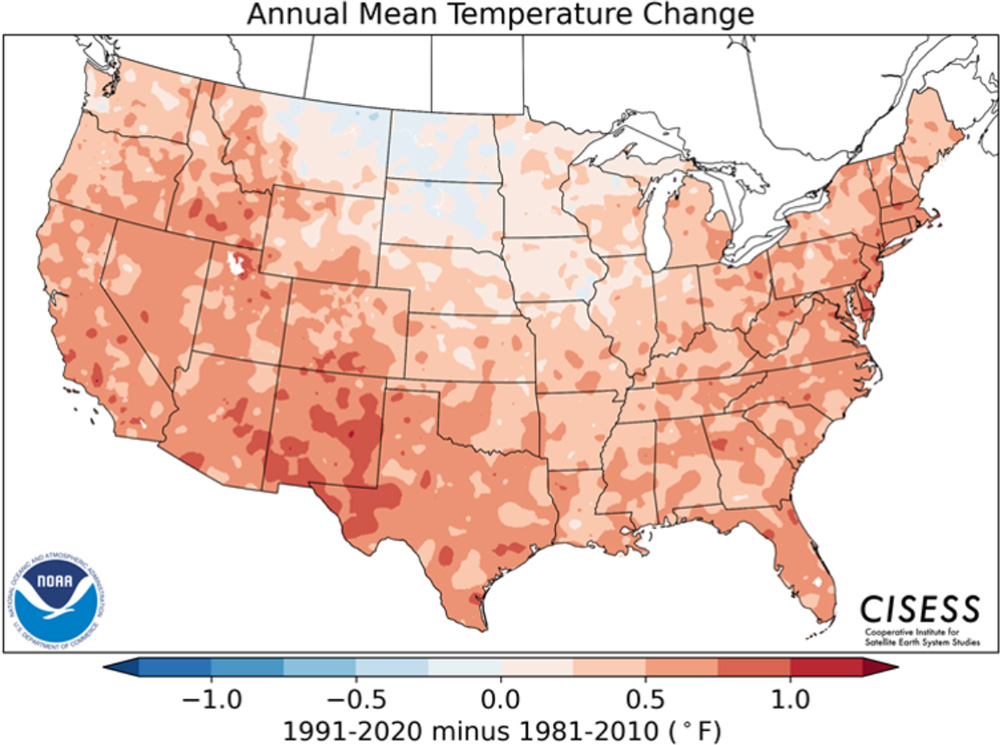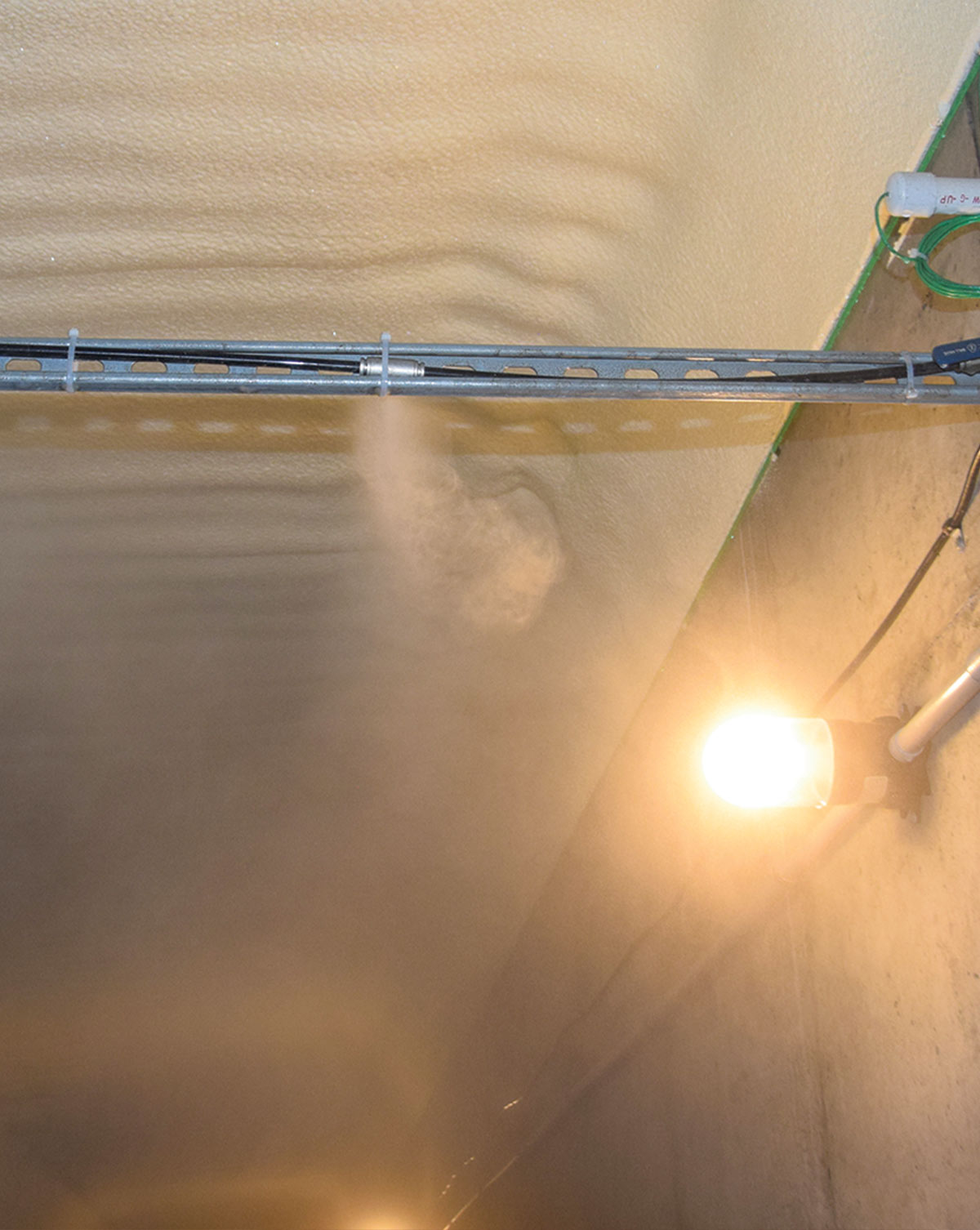Consideration in Process of Potato Storage
By Ben Ingalls P.E.
As harvest equipment and growers become faster and more efficient at loading storages, it’s essential for ventilation systems to keep up. Faster loading time results in greater heat load per day being put away than ever before. Between field heat and heat of respiration it is critical the ventilation system can keep up to ensure a successful start to a long storage season. This additional heat is compounded by the current trend of increasing ambient temperatures during harvest (Figure 1). Current storage designs offer storage managers more tools than before but how do we best use them?

Removing field heat more quickly has another benefit – disease management. As Nora Olsen, Mike Thornton, and Phil Nolte have described in the article, Harvest Temperature Consequences, when pulp temperatures are warm, the chance of potatoes becoming infected with Pythium dramatically increases. Additionally, pink rot can develop if inoculum is present. The article goes on to describe how proper airflow is essential to addressing these issues. Other articles such as Diagnosis and Management of Potatoes Storage Diseases, also by Nora Olsen, Jeff Miller and Phil Nolte, explains how cooler temperatures in storage reduce and slow the spread of disease. This will only be possible if the field heat can adequately be removed.
Potatoes are a living, breathing organism, which means they expel heat. Potato growers who disregard this important fact are putting their potatoes at risk. Farmers need to consider total airflow for fall harvest removal, especially with new and different varieties. Let’s look at a Russet Burbank potatoes as an example. The harvest shows varying rates of heat generation as respiration slowed. Table 1 illustrates how one ton of Russet Burbank produces 200 percent more BTU/day at 70 degrees versus 45 degrees.
Lower airflows are potentially ineffective, or at the very least, much slower when matched with this respiration, building heat load, motor load, and infiltration.

The evaporative cooling principle is a key component to maintaining your potato harvest’s freshness. Different studies have shown the benefits of high RH when compared to shrinking of the tuber, however the free cooling of evaporation from the Humidicell is not always realized or explained. In quick summary, when hot air passes through the saturated media, direct evaporative cooling occurs as liquid water converts to vapor. The air temperature then decreases while the relative humidity increases. By using more efficient media, potato growers can achieve additional free cooling, as demonstrated in the example tables below.


By changing the media size from 12” to 18”, the cooling increased 10% and gave an additional temperature drop of 1.8⁰F. This process is most efficient with warm incoming air that has low RH.




These new cellars, located east of Ririe, Idaho, offer state-of-the-art cooling and ventilation systems that will help keep potatoes in great condition until they are shipped out. Inset (from l to r). The Humidicell is a key piece of a cellar’s cooling system. This cellar uses a new humidification system (Fogco) that utilizes nozzles to create a fog/fine mist of moisture for tubers. In seconds of the system being switched on, the walkway looked like this (right).
Increased air volume along with the Humidicell type is a valuable tool to remove heat. Table 4 shows the same condition in a 25cfm/ton storage has 66 percent more heat removal compared to a 15cfm per ton design.

Saving Power Once Heat Is Removed
Once the field heat has been removed and the optimum storage temperature is achieved, you can reduce the fan speed to maintain temperature and save energy. But how do you determine the effect of reduced fan speed? To determine this value, you can apply fan laws and system curves. The most important items to look at are airflow (cfm) and horsepower (hp). Every portion of hertz reduction is proportional to the cfm for a system. For example, 60hz is full air while 30hz is half the air, and 45hz is three-quarters of the total airflow. This is not the same ratio for horsepower. As fans slow down, the horsepower is driven by a cubic factor, meaning that at 45hz, approximately 42 percent of the break horsepower is required (30hz is ~13 percent).
While the terms and numbers might seem like a lot, it’s important to apply the concepts stated here to identify the ideal airflow and storage temperature for your type of potato. Doing so helps ensure a healthy, wholesome harvest, maximum quality and revenue, and more sustainable potato storage for the future.
For more information, visit ivi-air.com.